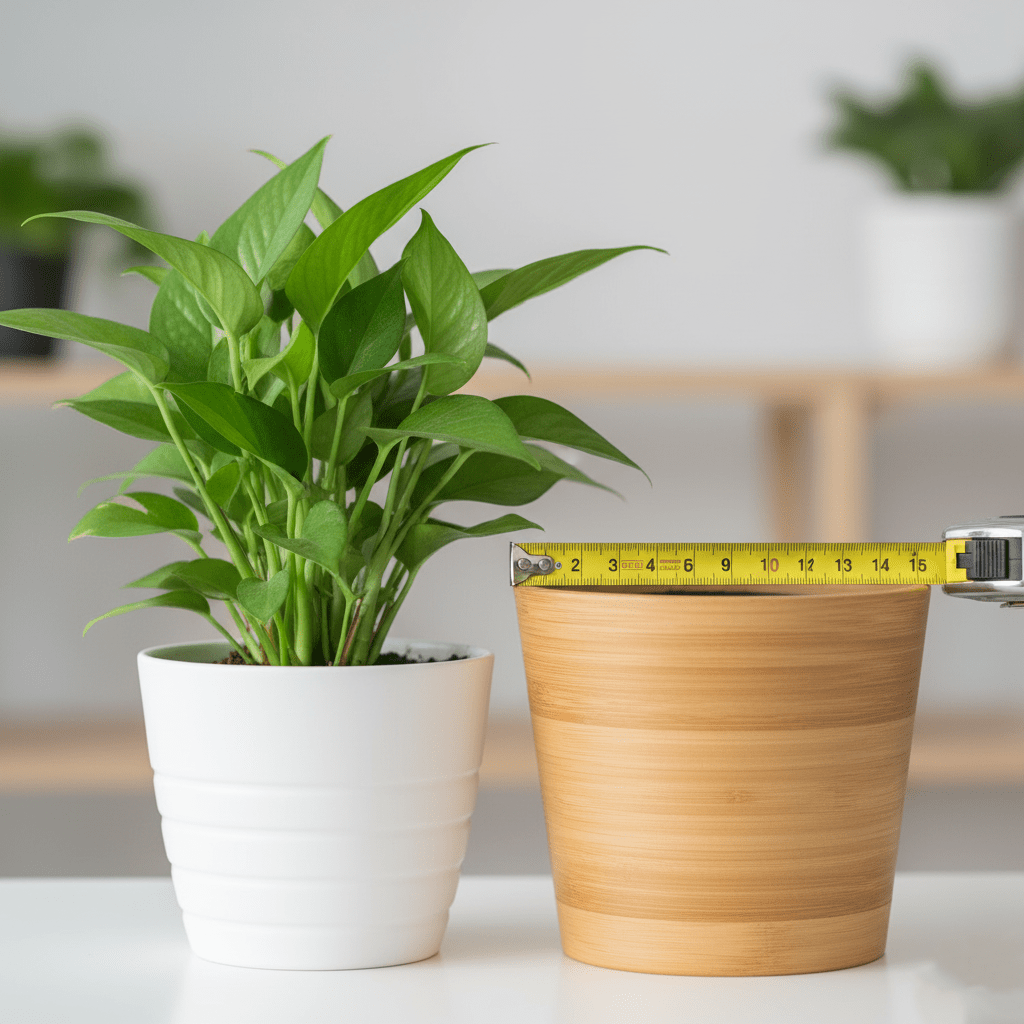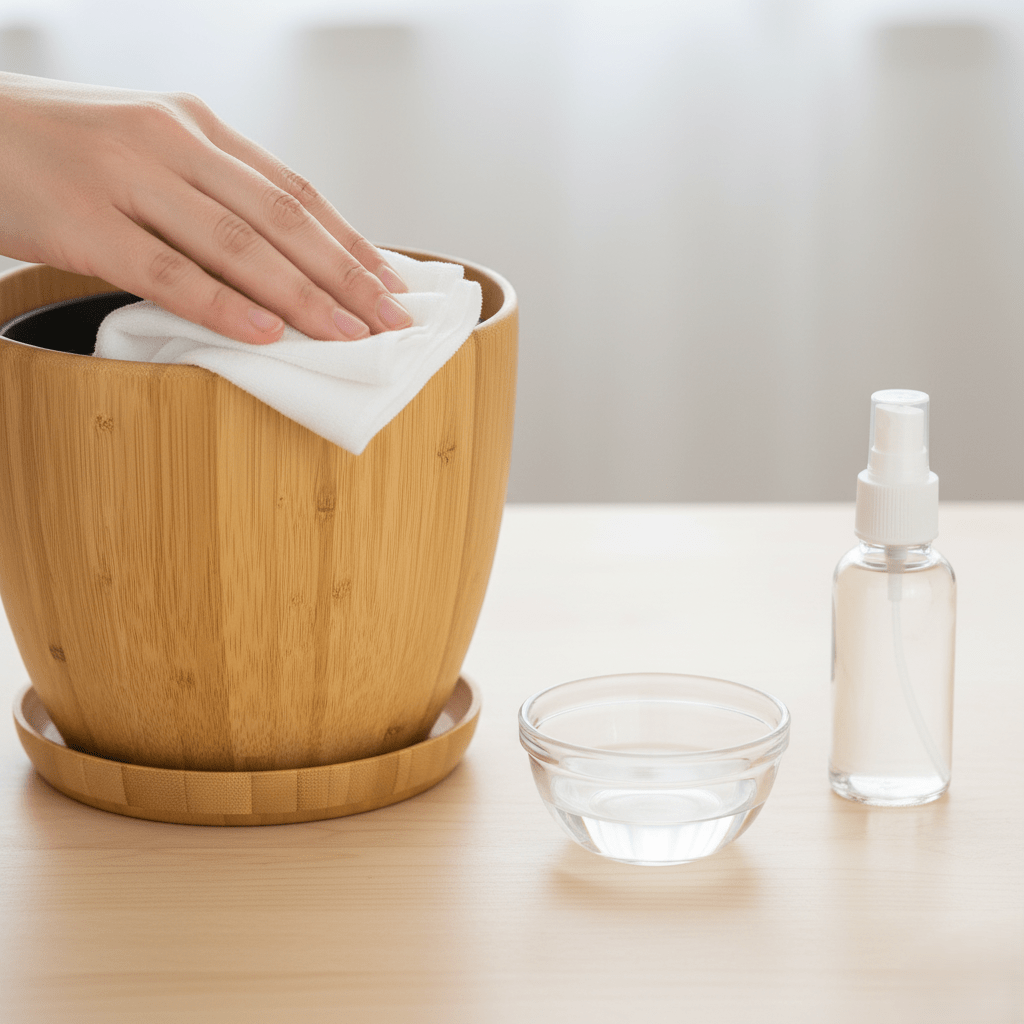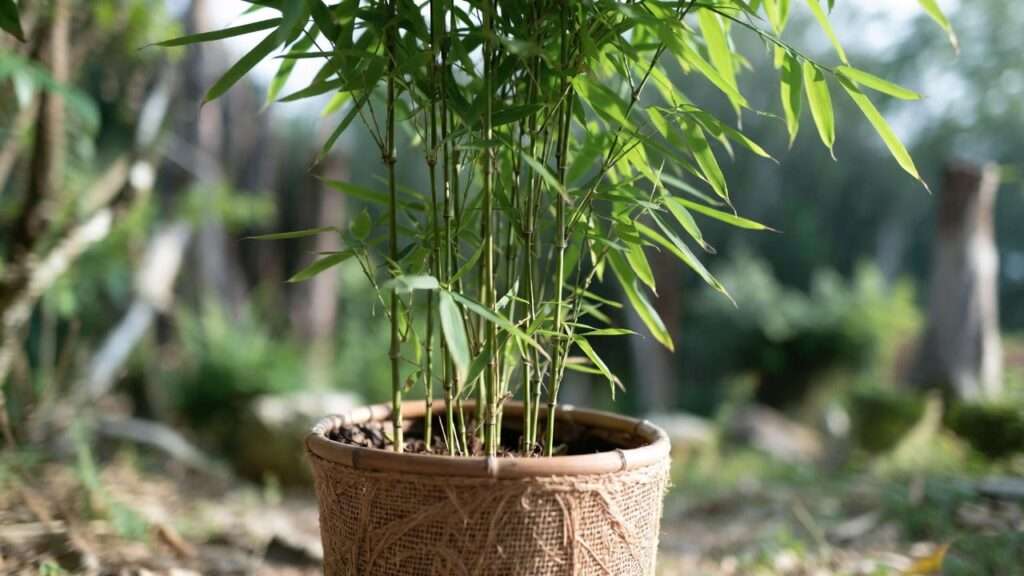Imagine a plant container that isn’t just a home for your favorite greenery, but a commitment to a healthier planet. If you’ve ever felt the guilt of buying yet another single-use plastic nursery pot, or watched your delicate tropicals struggle in heavy, moisture-trapping ceramic, you know the struggle is real. Finding the perfect vessel that balances style, sustainability, and superior plant health can feel impossible.
The good news? The solution is already growing right beneath our noses.
We’re talking about the bamboo planter pot. Within the first 100 words, we want to establish why this natural, renewable material is swiftly becoming the industry standard for conscious plant enthusiasts. Bamboo offers an unparalleled combination of natural beauty, incredible durability, and superior inherent drainage. This guide cuts through the noise and confusion of the marketplace to provide you with the definitive roadmap for selecting the best bamboo planter pot—a choice that will elevate your home’s aesthetic while giving your plants the ideal, breathable environment they need to truly thrive.
II. Bamboo vs. The Competition: A Deep Dive into Material Benefits
The core of choosing the right planter pot comes down to materials. While plastic is cheap and terracotta is traditional, neither offers the full spectrum of benefits provided by sustainable bamboo. Understanding these differences isn’t just about making an eco-friendly choice; it’s about making a horticulturally sound choice.

A. The Superiority of Bamboo (Expertise)
Bamboo is technically a grass, not wood, which gives it a unique cellular structure that is vastly beneficial for potted plants.
H3: Natural Drainage and Airflow
The primary killer of houseplants is overwatering, which leads to root rot. Unlike non-porous glazed ceramic or plastic, bamboo naturally possesses a slight porosity. Even a well-sealed bamboo planter pot allows for a subtle degree of gaseous exchange—meaning the roots can “breathe.” This natural breathability helps regulate soil temperature and moisture levels, significantly mitigating the risk of your roots sitting in stagnant, airless water. We often refer to this as the wicking effect, which helps draw excess moisture away from the root ball.
H3: Durability and Lightweight Design
Don’t let the natural look fool you; bamboo boasts incredible tensile strength, often exceeding that of steel. A well-constructed bamboo planter pot is remarkably robust and resistant to minor impacts. Crucially, it’s also lightweight. If you’re managing a collection of large, mature plants, moving a lightweight bamboo container for cleaning or seasonal rotation is far easier than wrestling with a heavy stone or solid clay pot.
H3: Sustainability and Low Carbon Footprint
For the ethically-minded gardener, bamboo is a non-negotiable choice. As the fastest-growing plant on earth, it can reach full maturity in just 3-5 years (compared to 20-50 years for hardwood trees). It requires no replanting, very little water, and releases over 35% more oxygen than an equivalent stand of trees. When your bamboo planter pot eventually reaches the end of its life, it is typically biodegradable (assuming minimal sealants), returning to the earth without contributing to landfill plastic waste.
B. Comparison Table (Quick Reference)
This table provides a high-level summary of common planter materials to help you visualize bamboo’s advantages:
| Feature | Bamboo Planter Pot | Plastic | Terracotta | Glazed Ceramic |
| Sustainability | Excellent (Renewable/Compostable) | Poor (Petroleum-based, non-biodegradable) | Good (Natural clay, but high kiln energy) | Fair (High kiln energy, difficult to dispose) |
| Weight | Very Lightweight | Lightweight | Heavy | Very Heavy |
| Drainage/Airflow | Excellent (Natural breathability) | Poor (Requires strict drainage hole use) | Good (Highly porous, but can dry plants out) | Poor (Sealed, non-porous) |
| Durability | High (Strong tensile strength) | Medium (Can become brittle over time) | Low (Extremely fragile) | Medium (Resistant to wear, but chips easily) |
| Aesthetic | Natural, Modern, Versatile | Basic, Industrial | Rustic, Traditional | Highly Variable, Formal |
III. The Critical Factors: How to Choose the Best Bamboo Pot for Your Plant
Choosing a bamboo planter pot is more than just picking a color; it’s a technical decision centered around plant physiology. The key to successful container gardening lies in matching the pot to the specific needs of the plant inside.

A. Size and Dimension: The Golden Rule of Repotting
The most common mistake new plant parents make is potting into a container that’s too large. An oversized pot holds excess soil, which in turn holds too much water, suffocating the roots.
H3: The 2-Inch Rule
For a thriving plant, when you repot, never move up by more than 1–2 inches in pot diameter (or 2 inches in radius).
- Example: If your plant is currently in a 6-inch diameter pot, the best new home is an 8-inch bamboo container. Any larger and you risk stunted growth and root rot, even with bamboo’s superior aeration.
Expert Tip: Always measure the internal diameter and height of the pot to ensure it gives the root system adequate, but not excessive, room for growth.
B. Drainage System Integrity
While bamboo is naturally breathable, proper drainage holes remain non-negotiable for 99% of houseplants.
H3: The Single Hole vs. Multiple Holes
- Single, Central Hole: This is the most common design. It works well, but requires you to ensure the hole doesn’t become blocked by a large piece of soil or root material.
- Multiple Small Holes: This is often found in bamboo fiber planters and is ideal for maximizing water exit without losing too much soil.
Crucially, because bamboo is moisture-sensitive over time, most bamboo planter pots are designed to be used with a liner (a waterproof plastic insert) or require a bamboo saucer underneath to catch runoff. If the pot you choose does not have a drainage hole, it’s best used as a decorative cachepot (meaning you keep the plant in its plastic nursery container and simply place that container inside the decorative bamboo shell).
A Note on Bamboo Baskets
Woven bamboo baskets, while beautiful, are never suitable for direct planting. They should always be used purely as decorative cachepots and contain a waterproof barrier or liner to protect the natural fibers from constant moisture.
IV. Bamboo Planter Pot Longevity: Expert Care and Maintenance
The appeal of a bamboo container is its natural look, but being an organic material, it requires more mindful care than plastic. This section details how to maximize the life of your planter, demonstrating true expertise and reliability.

A. Preventing Mold and Mildew in Bamboo
Moisture management is key to preventing the growth of mold or mildew on the exterior of a natural bamboo planter pot. This is especially true for unsealed or woven designs.
- Optimal Placement: Ensure the pot is placed in an area with good air circulation. Avoid setting it flush against a wall in a humid corner.
- Cleaning Routine: If you notice a faint white or dark residue, wipe the pot immediately with a solution of 1 part white vinegar to 4 parts water or a mild solution of diluted hydrogen peroxide. Always wipe the exterior dry afterwards. Do not use harsh chemical cleaners, as they can damage the natural fibers.
- The Soil Gap: Ensure your soil level is slightly below the rim of the pot. This prevents soil—which is constantly moist—from making prolonged contact with the bamboo rim, a common starting point for mold growth.
B. Protecting the Exterior Finish
The two main types of finishes—raw and sealed—require different approaches to maintenance.
H3: Finish and Treatment: Raw vs. Sealed Bamboo
| Finish Type | Pros | Cons | Maintenance |
| Raw/Natural Bamboo | Maximum natural breathability; pure aesthetic. | Shorter lifespan; highly susceptible to mold/stain. | Requires periodic light sanding and sealing (every 6-12 months). |
| Treated/Sealed Bamboo | Longevity; excellent water resistance; easier to clean. | Reduced natural aeration; potential chemical off-gassing (if cheap). | Only needs dusting and gentle wipe-downs. |
For sealed pots, inquire about the type of sealant. Food-grade sealants or natural oil finishes (like teak oil) are the gold standard, providing protection without introducing harmful chemicals that could be absorbed by the plant or air.
The Importance of Indoor Use
While bamboo is a tough material, it is not designed to withstand constant outdoor exposure to rain, snow, and severe UV rays. Bamboo planter pots should primarily be used indoors or on covered porches or patios. Constant wet-dry cycles will cause the natural fibers to swell, contract, and eventually crack or warp.
V. Expert Spotlight: Best Plants for Your Bamboo Pot
A great container complements the plant, not just the decor. Bamboo’s unique properties make it an exceptional host for specific plant types.

A. Moisture-Loving Plants That Thrive
Plants that enjoy consistently moist, but not soggy, soil benefit immensely from the subtle aeration of a bamboo planter pot. The material helps wick away the excess without allowing the roots to dry out completely.
- Peace Lilies (Spathiphyllum): They hate “wet feet.” The breathability of bamboo is perfect for managing their high water needs.
- Ferns (e.g., Boston, Maidenhair): These plants require consistently high humidity and moisture. The bamboo helps prevent the rapid surface drying that can stress ferns.
- Calathea and Maranta (Prayer Plants): Highly sensitive to soil conditions, they appreciate the stable moisture and temperature provided by bamboo.
B. Succulents and Cacti: A Cautionary Note
While you can use bamboo for drought-tolerant plants, extra steps are necessary. These plants require a soil that dries out quickly and completely between waterings.
- Soil Mix is Key: Use a specialized succulent/cactus soil mix with added perlite, pumice, or sand to maximize drainage. Never use dense, moisture-retaining potting soil.
- The Over-Drainage Strategy: If your bamboo planter pot is sealed, ensure the drainage hole is particularly large or consider adding a thin layer of lava rock or expanded clay pebbles (LECA) at the very bottom beneath the soil, which acts as a reservoir of air, not water.
C. Herbs and Edibles
Bamboo planters are a beautiful and safe choice for kitchen herbs like basil, mint, and chives. Their natural look integrates perfectly with a culinary setting. Crucially, if planting edibles, ensure the bamboo is completely untreated or sealed only with a food-grade, non-toxic finish.
VI. Troubleshooting Common Bamboo Pot Issues
Even the best materials run into problems. Being prepared to troubleshoot is the hallmark of an expert plant parent.
A. Problem: White Powdery Residue on the Exterior
The Cause: This is often efflorescence—mineral salts, fertilizers, and calcium deposits being drawn out of the soil and through the pot’s surface by evaporation (the wicking effect). It’s harmless but unsightly.
Solution: Simply scrub the affected area with a light, non-abrasive brush or cloth dipped in a solution of 1 part distilled white vinegar to 9 parts water. Rinse with plain water and dry thoroughly.
B. Problem: Rapid Soil Drying
If your bamboo container is unsealed and placed in a very sunny or dry location, the natural material may wick moisture out of the soil too quickly, stressing the plant.
Solution:
- Change Soil Mix: Switch to a premium peat-based or coconut coir-based soil mix, which retains moisture better than bark or standard garden soil.
- Use a Liner (if unsealed): Placing a thin, flexible plastic liner inside the bamboo pot will stop the wicking process and retain moisture more effectively.
- Opt for a Sealed Pot: If you live in a low-humidity climate, a quality, sealed bamboo pot will be more moisture-retentive than a raw one.
C. Problem: Warping or Cracking
This usually occurs due to poor construction quality or prolonged exposure to excessive outdoor moisture.
Solution: When purchasing, look for high-quality, vertically-grained bamboo construction, which is inherently stronger than cheaper, pressed wood composites. If cracking occurs indoors, it’s often a sign that the room humidity is fluctuating too severely; try placing the pot on a humidity tray (a saucer filled with pebbles and water) to stabilize the microclimate.
VII. Conclusion: Making Your Final Choice
Choosing a bamboo planter pot is a choice for beauty, longevity, and sustainability. You are not just buying a container; you are investing in a product that supports a cleaner planet while providing optimal health benefits for your beloved plant family.
By focusing on the 2-inch repotting rule, prioritizing quality drainage systems (whether via holes or a smart cachepot strategy), and understanding the difference between raw and sealed finishes, you are now equipped to make a highly informed, expert-level decision.
Your plants will undoubtedly thank you for the superior aeration and the consistent, stable home environment provided by the natural excellence of bamboo.
VIII. FAQs (Schema Optimization/People Also Ask Potential)
- Q: Are bamboo planters safe for food plants?
- A: Yes, but only if they are untreated or sealed with a certified food-grade, non-toxic sealant. Always verify the finish if you plan to grow herbs or vegetables.
- Q: How long does a bamboo planter pot typically last?
- A: A high-quality, sealed bamboo container can easily last 5–7 years indoors with proper care. Raw bamboo, due to its porous nature, may last 3–5 years before showing significant wear.
- Q: Does bamboo attract pests or bugs?
- A: No more than any other organic material. Pests like fungus gnats are attracted to overly wet soil, not the material of the pot. By using bamboo’s natural wicking ability to keep the soil properly aerated, you may actually reduce the conditions that attract common houseplant pests.
- Q: Should I put rocks in the bottom of a bamboo pot for drainage?
- A: No. The “rock layer” myth has been debunked. It creates a perched water table—a layer of saturated soil just above the rocks—which is guaranteed to increase the risk of root rot. Rely only on proper drainage holes and a suitable soil mix.
- Q: Can I use a bamboo planter outside?
- A: It is highly recommended to use bamboo planter pots indoors or in fully covered and protected outdoor areas. Constant exposure to rain and sun drastically reduces the lifespan of the material.













